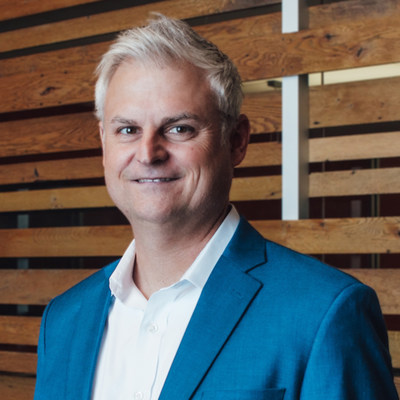New standards and funding to trigger changes at malls, C-stores, discount retailers, multi-family buildings and other properties
BENTONVILLE, Ark., Sept. 22, 2022 /PRNewswire/ — Emerging federal and state standards are finally clarifying how electric vehicle (EV) fast-charging will change the built environment, according to experts from HFA Architects and Engineers in a September 9 webinar.
HFA’s Garrett Small (P.E.) and Scott West (P.E.) conducted the webinar and Q&A (“The Road Ahead for EV Fast Charging“). Based in Bentonville, Small is the civil and landscape team lead. West, who advises C-store chains on pilot rollouts of EV fast-charging, is a Fort Worth, Texas-based mechanical engineer and energy team lead.
During the hour-long event, they discussed the implications for retailers and developers of emerging federal standards for direct-current fast-charging—an outgrowth of the bipartisan infrastructure law with $7.5 billion for EV charging and the electric grid. Newly defined as ranging from 150 to 350 kilowatts, so-called “Level III” fast chargers can power up a car in 20 or 30 minutes, versus the multiple hours required for lower-capacity chargers.
The HFA engineers also described state-level building code changes that will require EV chargers and/or electrical connections in new or redeveloped parking lots.
Small, who previously worked in real estate site-selection for a U.S. retail chain, encouraged retailers and developers to start researching how the shift to Level III charging will impact their costs. “When you start looking at investing in multiple parking spaces and chargers at commercial sites, the costs go up quickly,” he said. “If you don’t plan ahead and put this infrastructure in the ground early, the eventual cost could be 5 times or 10 times your projections.”
West summarized development-related revisions to California’s CALGreen Building Code that are set to take effect next year. “We’re seeing a lot of action happening at code-making organizations, and CALGreen is leading things off here in the United States,” West explained. “What’s coming out of California is a bellwether … We’re already seeing parts of it being replicated in other codes currently under development.”
The California code changes center on three different parking-space requirements: EV Capable, EV Ready and EV Installed. As West explained, EV Capable involves setting up the infrastructure for EV charging to a parking place—putting in the surface-mounted or buried conduit; making sure there is adequate electrical panel capacity; and setting up a dedicated branch circuit with a spare.
EV Ready requires a wiring install. “You’re terminating it at the parking place with a 240-volt plug,” West explained. “Now, someone with an electric vehicle and the correct adapter can plug-in once the charging station is added to that space. You’ve also got overcurrent protection installed for safety.”
EV Installed (also called EV Supply Equipment or EVSE) is full parking-space installation of third-party EV charging equipment. “For CALGreen’s base requirements, roughly speaking we’re talking about 20 percent of spaces that need to be EV Capable,” West said. “Out of that, at least 25 percent need to be with the full EVSE installed.”
However, if municipalities opt into CALGreen’s Tier 1 or Tier 2 designations, businesses located within them will be required to cross higher hurdles. “Tier 1 is 30 percent of parking spaces being EV Capable with a third of those spaces being EVSE installed,” West noted. “Tier 2 is 45 percent of all parking spaces being EV Capable. Once again, a third of those would need to be EVSE installed.”
Retailers and developers can seek to offset a portion of these higher costs by studying and vying for federal, state and local EV-infrastructure incentives. The infrastructure law, Small noted, calls for EV fast-charging stations every 50 miles or so along certain federal transportation corridors. “Maybe those places with the best charging technology will become destinations for consumers. With big challenges come big opportunities.”
A video recording of the webinar is available at:
https://www.hfa-ae.com/blog/the-road-ahead-for-ev-fast-charging-webinar
In addition, West covered EV charging considerations for c-stores and other retailers in a blog post available here:
https://www.hfa-ae.com/blog/the-road-ahead-for-ev-fast-charging
NOTE TO EDITORS: HFA’s Scott West and Garrett Small are available as resources for stories on how new EV-charging standards and building code revisions could affect retailers and developers nationwide.
Media Contacts: At Jaffe Communications: Elisa Krantz, 345252@email4pr.com, (908) 789-0700
SOURCE HFA Architects & Engineers



